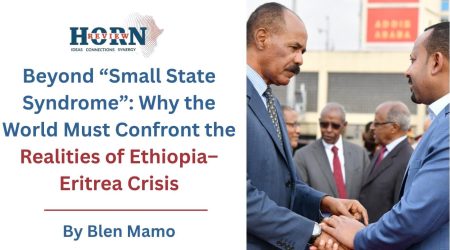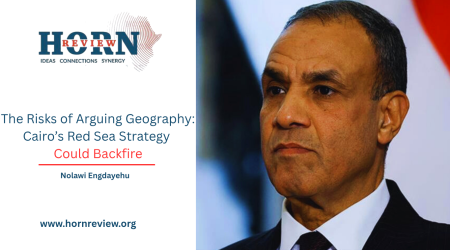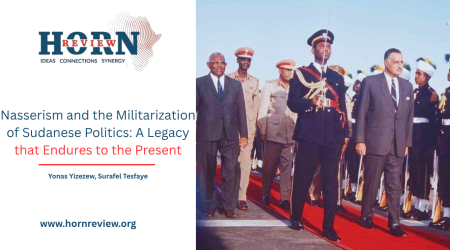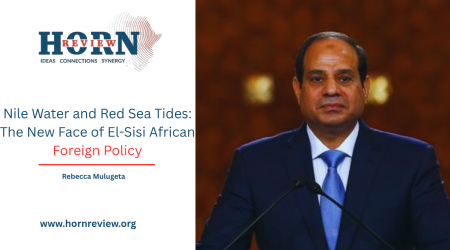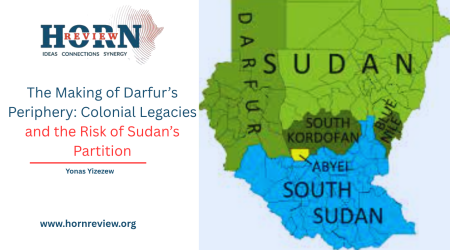
18
Nov
How Gulf Ambition is Reshaping the Red Sea and the Horn of Africa
The geopolitics of the Gulf monarchies, shaped by their interests and world view, is constructing a new security complex that binds the Middle East and the Horn of Africa, with the Gulf emerging as its core. The dynamic is not solely political; economic and societal currents also feed into this evolving architecture. At the centre sits the overarching influence of the United States, which, in its retreat from global commitments, is allowing these monarchies to assume a superseding role in the Middle East. This shift is rooted in Washington’s priorities, especially under President Trump, where policy coalesced around two imperatives: trade and the security of Israel. The Gulf states, endowed with immense financial capacity and increasingly receptive to Israel’s regional position, became the ideal partners to whom the United States could effectively transfer elements of its longstanding influence.
The figures shaping this alignment are Mohammad bin Zayed and Mohammed bin Salman, whose strategic outlook diverges markedly from that of their predecessors. Both have advanced foreign policies that position their states as autonomous centres of regional influence. While the partnership between Riyadh and Abu Dhabi remains strong, it is also fluid. They diverge on significant questions of regional politics. The UAE has cultivated an assertive and risk-tolerant posture, whereas Saudi Arabia, particularly after the Yemen intervention, has opted for caution, privileging diplomacy and economic statecraft over coercive force. The outcome is two independent yet interlinked hubs of power, forming part of a broader constellation of emerging leadership in the Gulf.
The motivations for Gulf involvement in the Horn and wider Red Sea arena rest on both security imperatives and economic ambition. As Shady Ahmed Mansour and Yara Yehia Ahmed argue, the “proactive” strategies adopted by Saudi Arabia and the UAE are designed chiefly to contain the threats arising from Iranian and, more recently, Turkish activism. Until late 2014, roughly the period coinciding with Saudi Arabia’s entry into the Yemen conflict, Gulf engagement in the Horn was oriented primarily toward economic interests, especially food security through agricultural investment. The UAE’s sustained emphasis on maritime and logistical sectors, and its aspiration to assemble a network of ports across the Red Sea, defined the structural pattern of its outreach.
Security considerations elevated the region’s significance. Iran’s ambitious reach under the banner of the “Axis of Resistance,” reinforced by the war in Yemen, extended into the Horn of Africa. Turkey’s growing activism, coupled with its alignment with Qatar during the 2017 Gulf crisis, sharpened Emirati and Saudi apprehensions. Turkish interests diverged sharply from those of the Gulf monarchies, and Middle Eastern rivalries increasingly spilled onto the shores of the Red Sea and the Horn. Over time, these rivalries have shifted in favour of the Gulf. The resolution of the 2017 crisis, the gradual erosion of Iran’s regional axis, and the new diplomatic architecture anchored in the Abraham Accords have all strengthened the strategic centrality of the Gulf states.
The intervention in Yemen, and its widely recognised shortcomings, served as a formative experience. It did not reverse the Gulf’s outward orientation but recalibrated it. Riyadh, more than Abu Dhabi, has grown reluctant to rely on military intervention. Saudi Arabia now projects influence primarily through diplomacy, financial leverage and regional engagement. Mohammed bin Salman envisions a Saudi Arabia that enhances its regional and global stature by broadening its external ties and resolving entrenched conflicts. The UAE, meanwhile, continues to foreground its confrontation with movements it defines as radical political Islam, a priority shaped by the aftermath of the Arab Spring and manifest in contexts such as Egypt, where Gulf backing facilitated the ouster of the Muslim Brotherhood.
These motivations—security concerns, economic diversification and post–Arab Spring political calculus—also underpin Gulf engagement in the Horn of Africa.
The imprint of Gulf involvement across the Horn of Africa is wide-ranging and multi-layered. The first and arguably most consequential arena of influence emerged in Ethiopia, where the Gulf, and particularly the UAE, rolled out extensive support in the political transition that began with rise of Abiy Ahmed in 2018. The rapprochement between Ethiopia and Eritrea in the same year, encouraged and financed by Gulf intermediaries, stands as a notable example of the region’s susceptibility to Gulf diplomacy. Although the arrangement ultimately unravelled, the episode demonstrated the scale of ambition and the depth of political capital that Abu Dhabi and Riyadh were prepared to invest.
Alongside political engagement, the most visible manifestation of Gulf power projection lies in the UAE’s expansive maritime presence. Ports across the Horn have become strategic anchors through which Abu Dhabi advances its economic and logistical ambitions. This network reflects a broader drive to reposition the UAE as a global trading hub and to secure influence along critical maritime corridors that connect the Gulf to the Red Sea and beyond. The accumulation of port concessions and maritime infrastructure reveals an enduring pursuit of economic leverage intertwined with geopolitical reach.
A more destabilising expression of Gulf involvement is playing out in Sudan’s civil war. Following setbacks in Yemen and Libya, the UAE now finds itself deeply entangled in a destructive conflict, backing the RSF, a force widely condemned for its conduct. Abu Dhabi’s motivations combine economic incentives, particularly in gold extraction and agricultural land, with its determination to confront currents of political Islam embedded within Sudan’s governing structures. This has placed the Gulf at the centre of one of the region’s most volatile crises, revealing the high risks that accompany unilateral interventionism.
Beyond these focal arenas, Gulf influence is discernible in Somalia, Djibouti and Eritrea, where ports and associated infrastructure function as gateways for both economic engagement and political leverage. The pattern is consistent: maritime footholds provide the basis for a broader strategic presence, extending the Gulf’s reach into the political and economic life of the region.
The central question is whether the Gulf’s emergence as a regional power hub will ultimately serve the interests of the Horn. In the Middle East, Saudi Arabia’s recent conduct, which has been fairly deliberate, pragmatic and oriented toward de-escalation, has generated meaningful dividends. Riyadh has refrained from framing disputes as existential, managed its rivalry with Iran with restraint, reassessed its position toward Israel and adapted to the post-intervention realities in Yemen.
In the Horn, Gulf involvement has produced mixed and often contradictory outcomes. Ethiopia’s transition benefited substantially from Gulf support, and the early rapprochement between Ethiopia and Eritrea offered a glimpse of what constructive Gulf engagement might yield. Saudi Arabia, in particular, remains well positioned to facilitate renewed dialogue between the two states, whose relationship has deteriorated markedly. Yet the examples of Libya and Sudan expose the perils of Gulf-backed power contests, which have deepened polarisation and prolonged instability.
The region thus navigates a precarious geopolitical landscape, one shaped by the economic opportunities and diplomatic leverage that Gulf states provide, and simultaneously by the destabilising effects of their rivalries and interventions. Whether constructive or detrimental, Gulf assertion is becoming a defining reality for the Horn of Africa. As Abu Dhabi and Riyadh extend their reach beyond the Middle East, they increasingly view the region as their strategic hinterland and a region of elevated priority. The emerging Gulf-centred security and economic complex will continue to shape the political trajectory of the Horn, with consequences that will be profoundly felt across the region.
By Mahder Nesibu, Researcher, Horn Review

